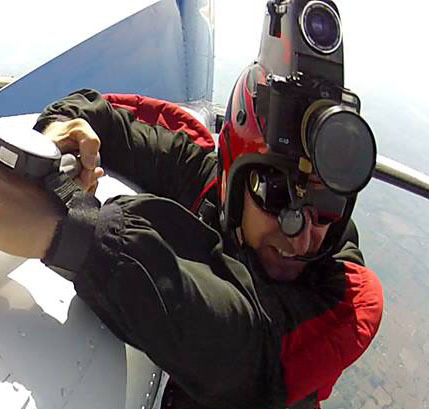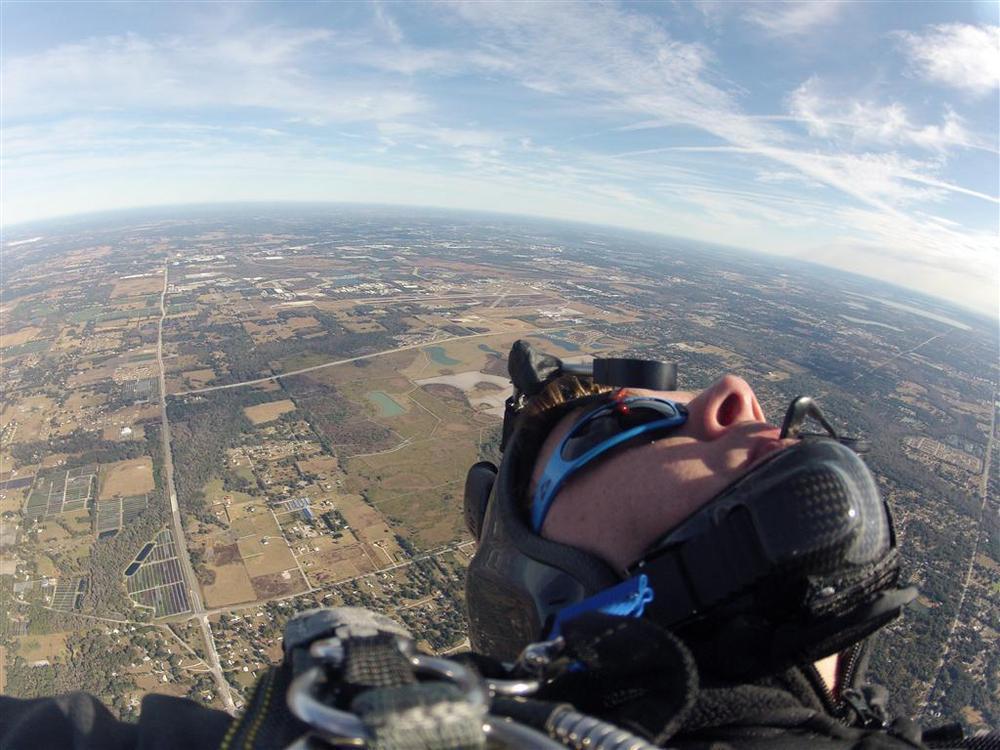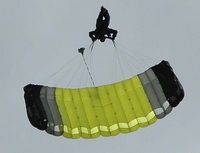Recommended Posts
billvon 2,464
> threat.
If you can fly it. For someone used to Navigator 280's, it can be a significant threat - hence the warnings.
>At first I would have said novice maybe intermediate, but I'm far surpassed
>what their MAX exit weights are, I just don't see myself as advanced.
"Getting away with it" does not equal "safe to do it." You can fly a Cessna 182 several hundred pounds overweight for years - that doesn't mean it's a good idea.
I guess it just comes down to it being case-specific for every individual.
QuoteYep,
I guess it just comes down to it being case-specific for every individual.
Yep, like I said in my previous post.
To keep you alive long enough to buy another canopy from them$$
"Son, only two things fall from the sky."
QuoteWhat is PD's mindset on their WL'ing charts?
To keep you alive long enough to buy another canopy from them$$
+1!!
Quote
The reason I ask is because take the Sabre2 150 for example, then run across to int, you get 150. So that's 1:1. For many, a Sabre2 at 1:1 is very docile and doesn't pose too much of a threat.
All parachutes, even big and lightly wingloaded ones, are unsafe and should be treated with respect. Didn't you learn that when you learned how to skydive?
Anyway, you want a Pilot, not a Sabre2. Go out and demo one now
I'm a BIG, TOUGH BIGWAY FORMATION SKYDIVER! What are you?
Quote
All parachutes, even big and lightly wingloaded ones, are unsafe and should be treated with respect. Didn't you learn that when you learned how to skydive?
Anyway, you want a Pilot, not a Sabre2. Go out and demo one now
We aren't oblivious to the risks of skydiving, c'mon now..
And I demo'd a Pilot 150, it was quite nice but I don't have TOO much to compare it to..
QuoteQuoteI share your confusion with the skill levels.
One way to decode them that I have seen used by one DZ on Saftey Day was to relate them to USPA license levels:
Student = Student
A lic = Novice
B Lic = Intermediate
C Lic = Advanced
D Lic = Expert
Without a doubt, that categorization is fraught with problems, but for purposes of Safety Day it worked. Each jumper's canopies were matched to manufacturer's recommendations and if the canopies were of the reccomended size or larger, the jumper got points toward prizes.
I have a hard time categorizing myself as an intermediate with my measly B license...
Yeah, and thats not even counting how you fly!
but, you're safe, you weigh like 90 lbs soaking wet...
DPH -7, TDS 578, Muff 5153, SCR 14890
I'm an asshole, and I approve this message
strop45 0
Wing Loadings
Class 1 - Student Canopy .5 to .75 Lbs/SqFt
This wing loading will perform basically as a student canopy. You may wish to choose a canopy in this range if you are very unsure of your ability, physically injured or disabled in some way, elderly or frail or as a student canopy. A canopy in this class should not be jumped in over 15 knots. These canopies are easily affected by turbulence.
Class 2 - Docile .75 to 1.00 Lbs/SqFt
Still a very docile range. This would suit an advanced student canopy or a first canopy for someone preferring to err on the safe side. Again affected by higher wind conditions before most canopies would be.
Class 3 - Mid Range 1.0 to1.25lbs/SqFt
This mid range of canopy is a good bench mark to work from. These canopies are high enough wing loading to start having a little fun yet low enough that a reasonably competent low time jumper could handle one as a first canopy (check with your C.S.O.) and still have a canopy they want to be jumping in a couple of hundred jumps time. This is also getting into the range that must be treated with a little respect however still has a reasonably good margin for error. Most of the canopies we sell are in this range. From this loading up, most wind conditions allowable for jumping are not a problem.
Class 4 - High performance 1.25 to 1.65 Lbs/SqFt
Now we're having fun ! We qre also into potentially high danger area! Turn speeds are increasing air speeds and speed range are increasing dramatically all of which provides us with a direct trade off between fun and safety. Canopies in this range must be flown to the ground! Recovery arcs are generally over 200 feet and toggle input movements are getting noticeably shorter. A high degree of experience and competence is necessary to handle a canopy in this range. Flying a canopy in this range must be done by feel, every maneuver must be well planned ahead as things are happening very quickly.
With a high wing loading turbulence will affect the canopy less but if affected remember you are traveling much faster. Being dropped 1/2 a meter by turbulence under a class 2 canopy is not even going to affect your stand up landing but being dropped 1/2 a meter in the middle of your ballistic turf surf could ruin your summer. The same goes for other obstacles - buildings, fences, people, other canopies, etc, have much more impact at high speeds. Even uneven ground or short landing areas should be considered obstacles. These canopies will still be traveling horizontally in nil wind conditions. A collapsible pilot chute is recommended. Lowering the slider and loosening the chest strap is suggested.
Class 5 - Extreme 1.65 to 2.00 Lbs/SqFt
Not for the faint hearted. If you are one of the few people that want to fly a class 5 canopy consider every aspect of what you are doing very carefully. On the up side there is very exhilarating airspeed, quick response times and powerful maneuverability. On the down side our margin for error has reduced to almost nothing (!), compounded by the fact that if we do make an error we are almost certainly traveling at speeds that can maim. If you have or are considering a class 5 canopy we can't tell you how to fly it in this overview, we must assume you know what you are doing.
Most people I watch flying class 5 canopies don't fly them to the limits of the canopy and the performance they achieve from their canopy could be achieved from a class 4 canopy flown to its limits with a far greater safety margin. These canopies generally have to be run out on landing. They must be fitted with a collapsible pilot chute. Lowering and collapsing the slider and loosening the chest strap is recommended. Canopy recovery arcs can be over 400 Ft radius. The step from a class 4 canopy to a class 5 canopy can be quite large i.e. for a 80 kg jumper with gear and weights the difference between a 105 and a 95 feels similar to the difference between a 130 and a 105.
Class 6 - BALLISTIC 2.0 to 2.4 Lbs/SqFt
If you are considering this, you don't need an explanation.




.thumb.jpg.4bb795e2eaf21b8b300039a5e1ec7f92.jpg)




So why is he now saying:
You need to speed up there, Fitz, or get off the fence before your asshole collects a lot of splinters. Lord knows how many it can hold.
Share this post
Link to post
Share on other sites